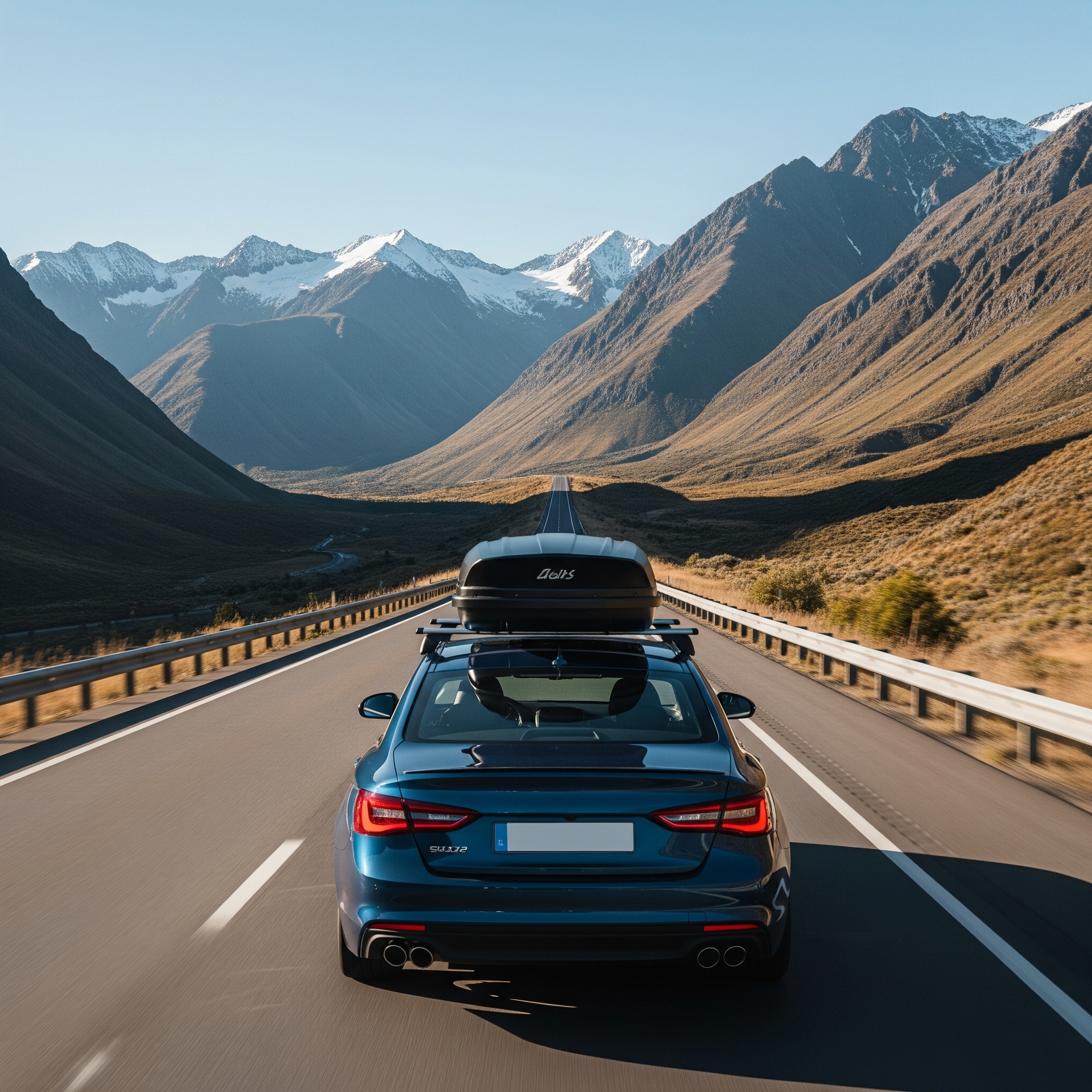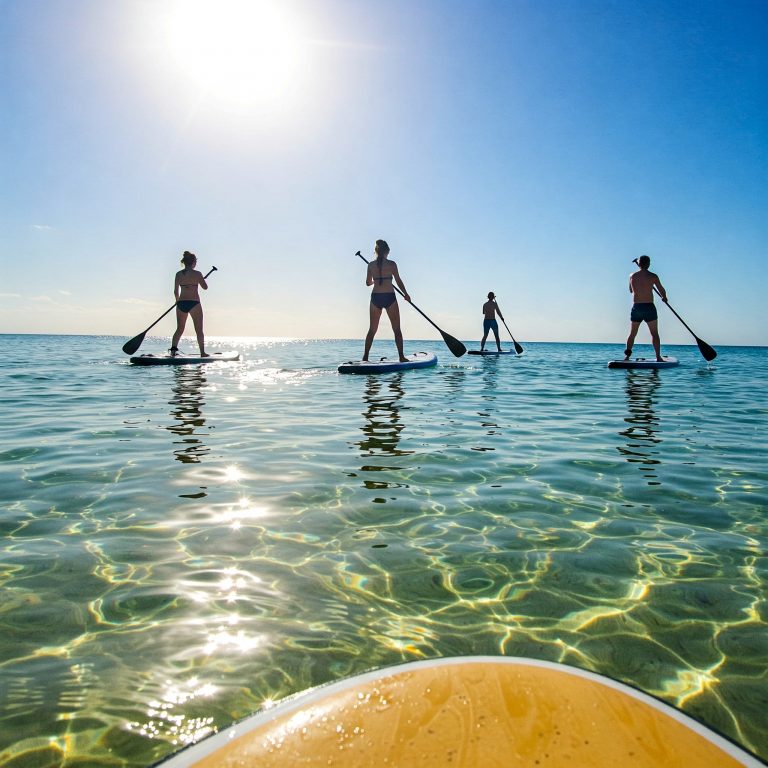Introduction
There’s something deeply satisfying about planning for long distance road trips, as of course is going on them. Whether it’s across a few counties or the length of a country, the open road has a way of slowing things down and helping you see places you’d normally fly straight over.
You’re not crammed into a tight seat with plastic food and tinny announcements. You’re in charge of the pace, the music and the view.
But for all its freedom, a great road trip doesn’t just happen by accident. A bit of planning and a few sensible checks before you go can make the difference between a brilliant trip and a stressful one.
So, if you’re thinking about hitting the road soon, here’s how to make sure the journey itself is every bit as good as the places you’re going to see.
Preparation: The Foundation of a Great Trip
Before you even pack your car or caravan/RV etc. There are a few things worth sorting that will save you time, money and headaches later on.
Vehicle Maintenance
Make sure your vehicle is actually ready for the trip. It sounds obvious, but it’s surprising how many people set off without checking the basics. Start with an oil change if it’s due and top up all the fluids, including coolant, windscreen wash and brake fluid. Check your tyre pressure and tread depth, not forgetting the spare if you have one. Test your headlights, brake lights and indicators and make sure your air conditioner and heater are working properly, especially if you’re driving through different climates.
Pack a basic toolkit including jumper cables, a tyre inflator or pump and a torch. Throw in some emergency bits too: a warm blanket, high-vis vest, warning triangle and a paper map. If you’ve got room, a folding shovel or snow chains can be useful if you’re heading anywhere remote or unpredictable. And the day before you leave, give the car a proper clean and fill the tank. It makes for a more relaxed start in the morning. Of course, don’t forget to check that your MOT (or equivalent, road safety certificate) is in date and ideally not going to expire mid-journey.
Get Enough Sleep
Please, please do not overlook this one, especially when there’s packing to do and excitement the night before. Try to get a proper rest not just the night before, but ideally for a couple of nights leading up to the trip. Aim for at least seven or eight hours of sleep.
Driving tired is dangerous and it’s not a fun way to start the journey either. If you can, set off early in the morning when you’re fresh and the roads are quiet. You’ll beat the traffic and probably get to your first stop with time to spare.
Planning: Structure with a Bit of Wiggle Room
A bit of planning makes a big difference on a long road trip, but try not to overdo it. The best trips usually have some shape to them, but also enough space to allow for changes along the way.
Choosing Your Route
Start by plotting out your main route using apps like Google Maps, Waze or Wanderlog. These are great for giving you a rough idea of how long things will take and helping you avoid traffic or road closures. But don’t feel like you have to stick to the fastest route from A to B. Sometimes the slower, scenic roads are far more interesting, even if they add an hour or two. Look for coastal drives, mountain passes or countryside lanes if you’ve got the time. And if something along the way looks worth a stop, go for it. That’s half the point.
How Much Driving is Too Much?
It can be tempting to cram in as many miles as possible, especially if you’re trying to cover a lot of ground. But most people find that anything more than about five hours of driving in a day starts to feel like hard work. Less is even better if you want to actually enjoy the places you’re passing through. Try to build in a few longer stops where you can walk around, have a proper meal or explore a town for an hour or two. It makes a huge difference to your energy levels.
Using Route Planning Apps
If you like a bit of structure, Wanderlog is great for putting together an itinerary, budgeting your trip and saving your bookings all in one place. But you can always set up your own spreadsheet or find templates online e.g. for Google Sheets.
For hiking and nature stops along the way, AllTrails is useful too. But remember, plans are there to help you, not trap you. Leave space for the detours, they often end up being the best memories.
Packing: Comfort, Safety and Convenience
When it comes to packing for a long road trip, it’s not about taking everything you might possibly need, but rather making sure you’ve got the things that’ll keep you comfortable, safe and able to adapt as you go.
Essentials for the Car
There are a few basics every car should have on a long trip. A decent torch or headlamp (not just your phone torch), paper maps in case signal disappears, a first aid kit and a proper phone charger. Add some comfortable shoes or flip-flops for rest stops and a blanket, which can be useful for both warmth and impromptu picnics. Hand sanitiser, tissues and wet wipes always come in handy too.
Food and Drink
Service stations aren’t exactly known for healthy or cheap snacks, so it pays to bring your own. Think about foods that won’t melt or spoil in the car trail mix, protein bars, dried fruit, jerky and apples are all good shouts. Bring a decent-sized water bottle and keep it topped up. If you’re travelling somewhere hot or doing a lot of walking at stops, adding a few electrolyte tablets can help keep you feeling good.
Entertainment
Long stretches of road can get dull, especially if you’re driving through flat or repetitive scenery. Download a few playlists, some podcasts or audiobooks in advance so you’re not stuck when signal drops out. Use Spotify or any of the apps you are familiar with, so you’ll be you’re in the mood for learning something new as you go.
Driving Abroad: Extra Considerations
If you’re travelling outside the UK, especially in Europe, be aware that traffic laws and driving requirements vary by country. Not all EU countries follow the same rules on speed limits, road signs or roundabout etiquette. It’s worth checking local driving laws before you go. This EU site is a good starting point:
European Commission: Driving in the EU
Many countries also have legal requirements to carry certain items in your vehicle, which might include:
-
A warning triangle
-
A reflective jacket
-
A first aid kit
You can find a general list of what’s needed country by country here:
Safety First Aid: What Do I Need for Driving in Europe?
Check these details before you travel, especially if you’re crossing borders on the same trip, as requirements can change.
On the Road: Tips for a Smoother Ride
Once you’re out on the road, the aim is to keep things safe, relaxed and enjoyable. The more you look after yourself and the people you’re travelling with, the more energy you’ll have to actually enjoy where you’re going.
Driving Safely and Smartly
Stick to the speed limit, especially on unfamiliar roads or in rural areas where animals, tractors or sharp bends can pop up without warning. On good roads, a two-second gap between you and the car ahead is a solid rule. If the road is wet, dusty or unsealed, leave more room, four to five seconds is safer. It gives you time to react if something unexpected happens.
Regular Breaks
It’s easy to keep going for too long, especially if you’ve got a long stretch ahead or you’re aiming to beat the clock. But taking a proper break every two hours or so makes a huge difference. It keeps you sharp and stops that sluggish, heavy-limbed feeling from setting in. Get out, stretch, grab a drink and let your mind reset.
Staying Open to Surprises
One of the joys of road trips is stumbling across something you didn’t plan for, a great café, a strange little museum, a viewpoint you didn’t expect. Say yes to those stops. They might set you back half an hour, but they’ll probably be the bits you remember most.
Tech Tools Worth Having
These days, you don’t have to do everything manually. There are loads of apps and gadgets that can genuinely make road tripping easier. Still, it’s worth having a backup plan in case technology fails you.
Navigation and Planning
Google Maps and Waze are both solid choices for real-time directions and traffic updates. Waze tends to be better for city traffic, while Google Maps is usually more reliable in rural areas. Wanderlog is great for trip planning, especially if you like to save bookings, notes and stop ideas in one place. For walking trails or hikes along your route, AllTrails is a helpful extra.
Accommodation and Facilities
If you’re planning to camp or stay flexible with your accommodation, apps like iOverlander and Park4Night are can help you finding overnight spots. Whether it’s a basic lay-by, a full-service campsite or something in between, they’ll usually have reviews and photos too. For fuel, Waze helps find the cheapest petrol or diesel nearby.
Backup Essentials
Don’t rely too heavily on your phone. Keep a paper map just in case and bring a power bank or portable charger so you’re not stuck if your battery dies in the middle of nowhere. It’s also wise to download any maps, playlists or podcasts you’ll want before you leave strong signal behind.
Safety in Remote Areas
If your trip takes you well off the beaten path, into mountains, deserts or just long stretches of countryside, it’s important to think ahead a bit more than you might for city travel.
Knowing the Terrain
Do a quick bit of research on the area you’ll be driving through. Are the roads paved? Are there any known hazards like gravel tracks, flood-prone areas or wildlife crossings? Even seasonal changes like snow or heavy rain can turn an easy drive into something trickier. It’s not about being anxious, just being ready.
Being Prepared
Keep a proper emergency kit in the car. That means a torch, batteries, a decent first aid kit, a blanket and water at the very least. If you’re really going off-grid, consider carrying extra fuel or at least knowing where the last petrol station is before the long stretch. Paper maps and a fully charged phone can be a lifesaver if your GPS cuts out.
Fuel and Services
Before heading into remote areas, check how far it is to the next town or petrol station. Don’t leave it until the warning light’s on to refuel when you get the chance, especially late in the day when some places might close early. And make sure someone knows roughly where you’re going, just in case.
Travelling in an Electric Vehicle
Taking a long road trip in an electric vehicle (EV) is perfectly doable these days, but it does need a bit more forethought, especially if you’re heading somewhere remote or less developed in terms of charging infrastructure.
Planning Your Charging Stops
The main thing to factor in is where and when you’ll charge. Unlike petrol stations, chargers aren’t always where you expect them to be and they’re not always working. Apps like Zapmap (UK), A Better Route Planner (ABRP) and Chargemap are all useful for finding public chargers and checking real-time availability. Some even show whether the charger is in use or out of order, which can save a lot of frustration.
Be Realistic About Range
If your EV has a real-world range of 200 to 300 miles, you’ll probably want to plan a top-up well before you’re close to empty, just to stay on the safe side. Things like temperature, hilly terrain and heavy loads can all affect how far you can go on a single charge. It’s always wise to keep a bit of buffer, especially in areas with patchy charging cove
Remote Areas and Charging Gaps
In parts of the UK and definitely abroad in less EV-friendly regions, there are still big gaps in charging infrastructure. Some rural areas, national parks or coastal regions may have very few chargers, or only slow ones at that. If you’re travelling somewhere like that, consider staying somewhere with a charge point or planning your route to stay near major roads where infrastructure is
Cables, Apps and Backups
Make sure you have the right charging cable(s) and any RFID cards or app accounts set up in advance. Some chargers require specific apps or memberships and it can be fiddly trying to sort this out on the spot with weak signal. Also, a Type 2 to 3-pin adapter can be handy in a pinch, even if it’s slow. At worst, it might get you enough charge to reach a faster option.
EVs are brilliant for quiet, smooth driving and much lower running costs, but they do take a different approach when you’re planning long journeys. With a bit of preperation, they are just as good for adventure, as long as you know your limits and don’t rely on charging “just in time.”
Breakdowns and Getting Help on the Road
No one wants to think about their vehicle breaking down, but it’s something you should plan for before setting off, especially if you’re driving long distances or travelling in a caravan, camper van or RV.
What to Do If You Break Down
If your vehicle starts making strange noises or simply stops, try to pull over to a safe spot as soon as possible. Put your hazard lights on and, if you’re on a fast road or motorway, get out on the passenger side and wait behind the barrier. Use a warning triangle if it’s safe to place it at least 45 metres behind your vehicle (check legal requirements in your countries you are travelling in before you travel).
Stay calm and contact your breakdown service provider. Keep their number saved in your phone and written down in case your battery dies.
Breakdown Cover in the UK
If you’re driving in the UK, here are the main breakdown services that also cover caravans and motorhomes:
-
RAC: Offers UK-wide cover for cars, caravans and motorhomes up to 3.5 tonnes and 7 metres long. Their “Arrival” cover is designed specifically for caravanners and campers.
-
AA: Covers cars, camper vans and motorhomes up to certain weight and size limits. Their “National Recovery” level will take you, your passengers and your vehicle to any location in the UK.
-
Green Flag: Known for a “no size or weight limit” policy, which can be helpful if you’re travelling in a larger van or motorhome.
Make sure your chosen policy includes onward travel or alternative accommodation if your vehicle can’t be fixed straight away.
Breakdown Cover in the USA
Breakdown cover in the US is often linked to your vehicle insurance or through membership organisations. For RVs and longer trips, these are solid options:
-
AAA (American Automobile Association): Offers different membership levels depending on the region and you can add RV and trailer coverage to your plan.
-
Good Sam Roadside Assistance: Popular with RV travellers. Covers all types of RVs, trailers and towed vehicles with unlimited distance towing to the nearest repair centre.
-
Coach-Net: Focuses exclusively on RVs and offers 24/7 support, including mobile mechanics, towing and help with lockouts or flat tyres.
Always check what’s included, especially if you’re towing or driving through remote areas.
Breakdown Cover in Australia
Distances in Australia can be vast and mobile signal patchy, so breakdown cover is even more important. These are some of the best-known services:
-
NRMA (New South Wales): Offers general roadside assistance and specific RV cover with unlimited towing back to the nearest service centre.
-
RACV (Victoria): Offers options for larger vehicles and RVs, including towing, battery replacement and accommodation support.
-
RACQ (Queensland) and RAA (South Australia): Both offer motorhome and caravan-friendly roadside assistance and membership benefits.
If you’re travelling across state borders, make sure your provider has reciprocal arrangements so you’re not left stranded in a region where they don’t operate directly.
Final Thoughts
Long distance road trips are one of the best ways to see more of a place at your own pace. With a bit of planning, the right gear and a flexible mindset, they can be just as rewarding as the destination itself.
If you’re heading across the Channel, remember that EU driving laws vary by country and you’ll need to carry certain items like warning triangles and reflective jackets. Breakdown cover for Europe also needs to be bought separately, but it’s widely available even if you don’t have a UK membership.
Whether you’re in a hatchback, camper van or something much bigger, a safe and enjoyable trip often comes down to preparation and a willingness to go with the flow when things don’t quite go to plan.
Happy driving.
FAQ: Long Distance Road Trips
How do I manage toll roads on a long trip?
Check your route in advance using Google Maps or Waze, which usually show where tolls are. In the UK, some bridges and motorways still require payment, often online rather than at a booth. Abroad, some countries require a vignette (a prepaid sticker or digital pass) before using major roads. Look this up before you travel and sort it out early to avoid fines.
Can I sleep in my car overnight legally?
In the UK, it depends on where you park. Some motorway service stations allow short overnight stays, but not all. In rural or scenic spots, check if overnight parking is allowed and avoid private land unless you have permission. Apps like Park4Night help you find legal and safe places. In other countries, rules vary widely, so check local laws before relying on your car as a bed for the night.
What’s the best way to keep food fresh on the road?
A small cool box or electric car fridge can keep snacks, drinks and perishables cold for longer trips. If that’s not an option, stick to non-refrigerated foods like fruit, nuts, cereal bars and crackers. Freeze a few bottles of water the night before to keep the box cool and give you cold water as they melt.
How can I stop getting stiff or sore during long drives?
Make sure your seat is adjusted properly so you’re not hunched or overreaching. Every couple of hours, take a walk around, stretch your back, shoulders and legs and give your eyes a rest from the road. Compression socks can also help with circulation on very long days.
Is it safe to drive long distances alone?
Yes, but there are some extra things to keep in mind. Let someone know your route and check in regularly. Don’t drive tired and take breaks more often than you think you need. Stay alert when stopping in unfamiliar places and avoid pulling over in isolated spots late at night. Trust your instincts.
How do I avoid motion sickness as a passenger?
Try sitting in the front seat and keep your eyes on the horizon. Avoid looking down at books or screens for too long and stick to light meals. Ginger sweets or tablets can help, as can fresh air from an open window. If you’re prone to it, bring motion sickness tablets just in case.
Can I bring a pet on a road trip?
Yes, but plan for it. Make sure your pet is properly secured in the car, either with a harness, pet seatbelt or crate. Take regular stops for exercise and toilet breaks. Bring food, water, bedding and any medications. Not all accommodation is pet-friendly, so check ahead.
How do I keep children entertained on long drives?
Audiobooks and podcasts are great for keeping kids of all ages engaged. Pack games, toys and snacks within reach and build in stops at parks or attractions. Screen time is fine too, just make sure devices are charged (if you can’t easily charge via your charge point in your vehicle) and bring headphones if needed. A bit of novelty goes a long way, so rotate activities if the journey’s a very long one.




